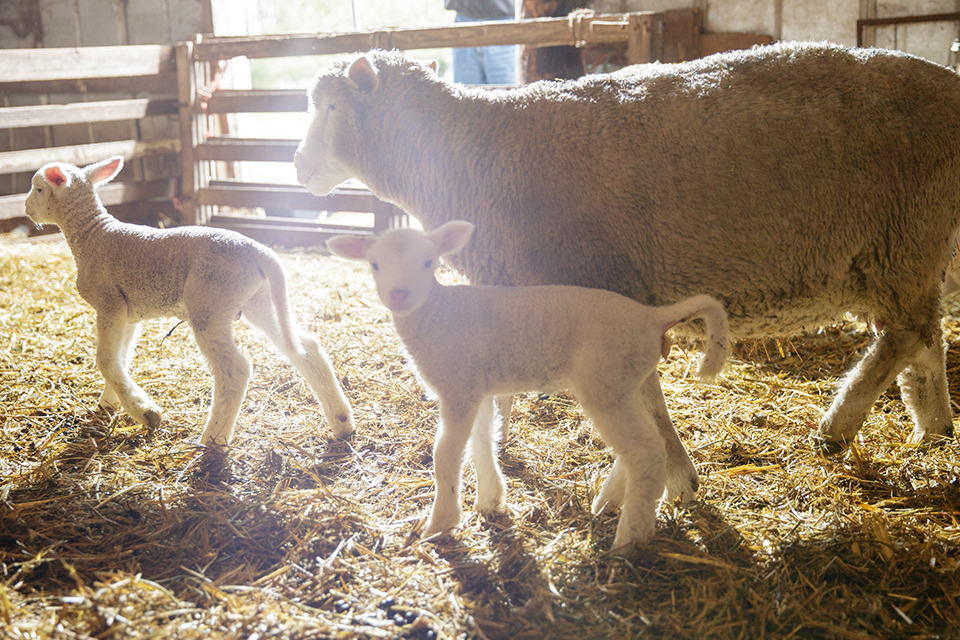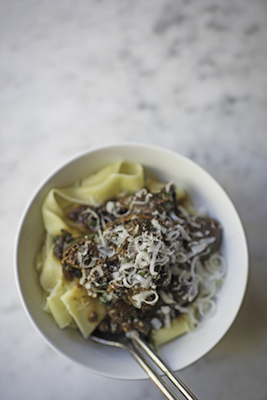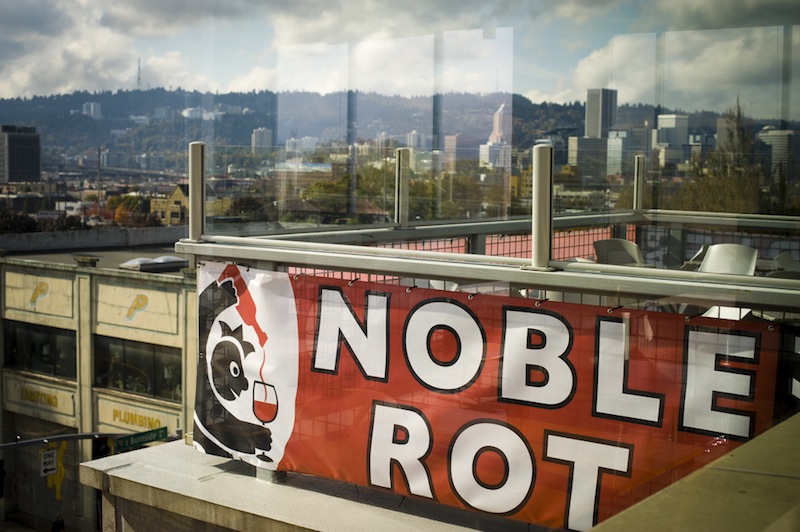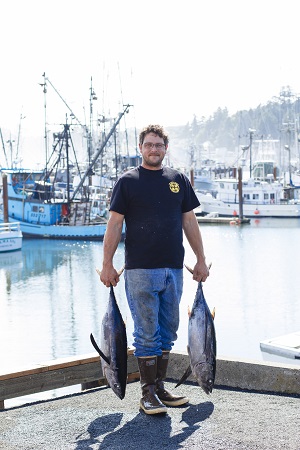written by Sophia McDonald | photos by Rob Kerr
The holidays are when Americans are most willing to look beyond the grocery store meat case’s holy trinity of chicken, beef and pork. Even foodies find themselves eyeing lamb with a mixture of curiosity and apprehension.
Lamb is still a tough sell for many Americans. Those unaccustomed to the bold flavor of imported products may find it gamey. Nearly everyone has gnawed their way through leather-tough lamb that was cooked incorrectly, seasoned poorly and served with a side of gelatinous mint jelly.
Besides, said Reed Anderson with Anderson Ranches in Brownsville, “It’s hard to get people to eat something with a cute face.”
Anderson can’t make consumers forget their affection for the wooly animals, but he’s trying his best to do something about the rest of these challenges. His entrepreneurial approach to raising, butchering and selling his favorite meat is making lamb more accessible and enjoyable for Oregonians.
Anderson and his wife, Robyn, both grew up in sheep-raising households and wanted to continue ranching as their career. To get started, they needed acreage, something neither had inherited from their families.
Anderson traveled all over the Northwest shearing sheep to save money for the first ranch. Shearing is bone-weary and dirty work, but raising grass-fed lamb has its own challenges. The top-producing countries—China, Australia and New Zealand—have lower-value currencies, which means they can sell their meat cheaper than American producers.
West Coast lamb producers also have a supply-chain problem. Few large-scale slaughterhouses remain in the region. Anderson found a small operation in Springfield that could take some of his lambs but, to be profitable, he needed someone who could take all of them.
Growing up, Anderson heard stories about his grandfather and great-grandfather’s custom slaughterhouse. They butchered lambs themselves, then drove them to Portland and sold cuts from the back of their truck. Selling to consumers didn’t interest him, but eliminating the middleman by working directly with wholesalers did. “I started going to stores and saying, ‘If we have lambs available, would you buy them?’ They said absolutely,” Anderson said.
With some confidence in the demand for lamb, he started working on the supply side. “I looked into buying a [slaughterhouse], but when you do that you’re buying a bunch of problems,” he said. Most were built in the 1950s or ’60s and need serious updating. Instead, Anderson decided to build one from scratch.
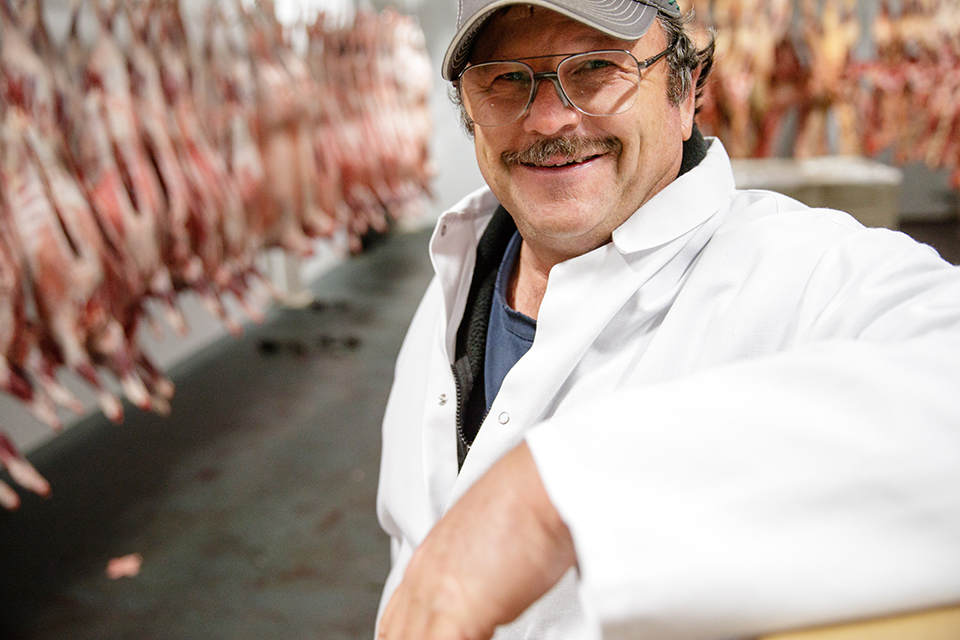
It took two years, but today his Brownsville abattoir processes 250 lambs a week. It also handles up to 150 sheep, goats and cows from surrounding farms.
“I’m pretty sure we’re the only ranch in the United States with processing onsite,” Anderson said. Forget about farm to table, he joked, “Our lamb is from conception to table.”
To get consumers excited about eating it, Anderson has done cooking demos up and down the West Coast and made YouTube videos. He focuses on the best way to cook lamb—grilling wins hands down, he said—and educating consumers that domestic lamb has a milder flavor more pleasing to American palates.
Surprisingly, Oregon wines have boosted sales, he said. As chefs across the country organize wine dinners that highlight different regions, they want foods from that region too. Lamb is a nice change from salmon when highlighting the Pacific Northwest.
Despite his success with vertical integration and creative marketing, he finds the lamb business a tough one. “But I really enjoy the entrepreneurial part,” he said. “I enjoy seeing things grow and then seeing people get excited about them. We’re very passionate about our product, and when you’re able to share that passion with someone who appreciates your hard work, I really like that.”
Approximately 2,500 Oregonians raise up to 250,000 lambs every year. While some are kept for wool, Richard Kosesan, executive director of the Oregon Sheep Growers Association, said the focus has shifted to meat production in recent years. “It’s a great protein source,” he said. “People who haven’t tried it in recent years really should.”
If you’re ready to do just that, lamb leg steaks with balsamic-braised figs is a great place to start. A recipe from chef Adam Sappington at Portland’s The Country Cat combines grilled lamb with syrupy figs cooked with balsamic vinegar and pinot noir.
If the idea of cooking lamb cuts is still too terrifying, buy ground lamb and make weeknight lamb bolognese from Nate Rafn, chef of Rafns’ Restaurant, a Salem eatery that focuses on using local and organic ingredients.
Ground lamb is also featured in the shepherd’s pie from Smithfields Pub & Pies in Ashland. The mashed potato-topped dish from chef Neil Clooney will warm the house and your belly on cold winter evenings.


